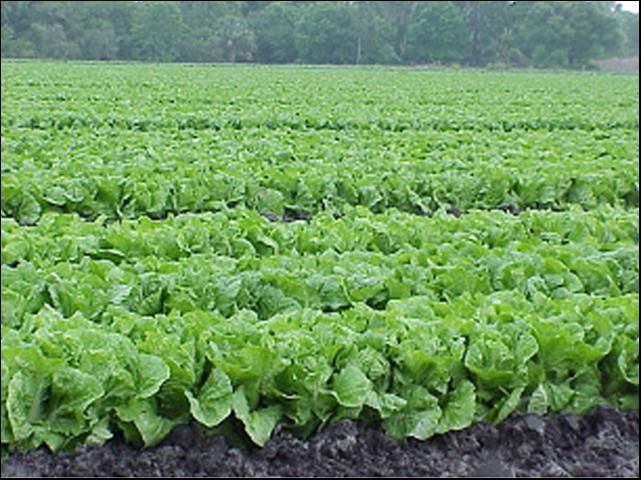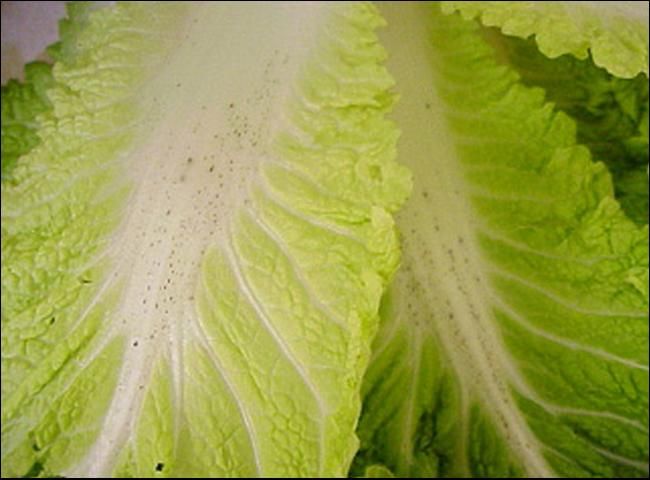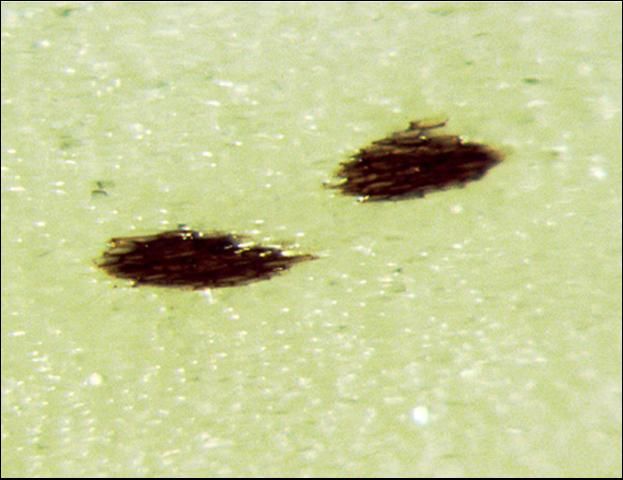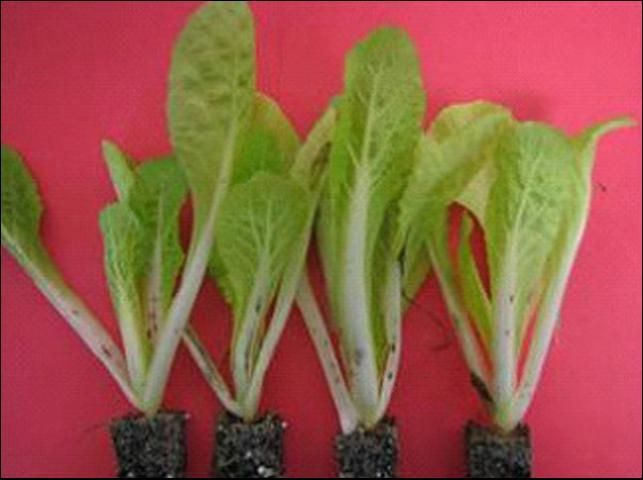Napa or napa cabbage (Brassica rapa) is a member of Brassicasseae, also called Cruciferae, the cabbage, the crucifers, or the mustard family. This family is economically important and includes these cruciferous vegetables: Armoracia rusticana (horseradish); Brassica oleracea (broccoli, brussels sprouts, cauliflower, collards, head cabbage, kale, kohlrabi, mustard, and savoy); Brassica rapa (turnip, Chinese cabbage, including two groups: Pekinensis Group: napa cabbage and Chinensis Group: bok choy); Brassica napus (rapeseed); Mathiola (stock); Raphanus sativus (common radish); and the model plant, Arabidopsis thaliana (thale cress), commonly used in molecular biology research. Napa cabbage is more closely related to mustard than it is to head cabbage.
Napa cabbage is originated from the Beijing area of China and commonly eaten in Asia. Since the last century, cultivation of this crop has been widespread in Europe, America, and Australia. Napa cabbage has been cultivated in North America for more than a century and in China for almost 1,500 years. Today, it is grown for sale primarily in California, New Jersey, Hawaii, and Florida. This crop is rapidly expanding and partially replacing the potato crop in the Tri-County Agricultural Area (TCAA) in northeast Florida. Napa cabbage has a somewhat milder taste than traditional green head cabbage when cooked or eaten raw and is typically eaten in soups and egg rolls, stir-fried, or pickled.
Napa cabbage is an annual plant that grows 10 to 20 inches tall and 6 to 8 inches in diameter (Fig. 1). The Napa cabbage head is not round like that of a regular green cabbage, but elongated like a romaine lettuce head, although lettuce belongs to the daisy family, Asteraceae (this EDIS pub has information about the daisy family for lettuce, https://edis.ifas.ufl.edu/publication/hs1276, Liu et al. 2016). The outer leaves are closely wrapped, usually over the top, to make a dense heart of paler green or yellowish leaves. As its heart is typically yellowish, this crop is also called wong bok, meaning yellow cabbage. All leaves have a broad central midrib.

Credit: P. Gilreath
Pepper spot is a physiological disorder that affects the white midrib tissues of Napa cabbage. Other names for "pepper spot" include gomasho, meaning "fleck," and black speck, black fleck, black leaf speck, petiole spot, and vein necrosis. This disorder is cosmetic and has a negative effect on the appearance and marketability of the cabbage. It is safe to eat. The main objectives of this article are to describe pepper spot symptoms, possible internal causes of pepper spot and postharvest handling effects on pepper spot.
Symptoms of Pepper Spot
The first symptoms of pepper spots are small, dark circular or elongated spots that first appear on the white midribs of the outer leaves and then spread to the middle inner leaves (Figure 2). Spots develop on both outer and inner surfaces of leaves. Initial darkening occurs at the juncture of two or more epidermal cells, spreading to include 20 or more cells that collapse to form the typical pepper spot lesion (Figure 3). Spots are similar in size to sesame seeds, and are about 1 to 2 mm in diameter. Midribs look as if ground black pepper was sprinkled on them, hence the name "pepper spot." This type of symptom would fall under section "51.459 damage" of the United States standard for grades of cabbage. It states that "damage" means any injury or defect that materially affects the appearance or the edible or shipping quality of cabbage (USDA 2016). Symptoms can occur in the field during growth, or they may develop during cold storage. Symptoms have also been observed on transplants (Figure 4).

Credit: P. Gilreath

Credit: J. Brecht

Credit: P. Gilreath
What Causes Pepper Spot?
The exact cause of pepper spot is not known. However, it is likely to be a combination of genetic and environmental factors. No pathogens have been consistently isolated in association with this disorder. High rates of nitrogen (N) fertilizer may make the disorder worse (higher density of spots of the same size), especially when ammonium nitrate is used (Dimsey and Bairnsdale 1997). It is believed nitrate (NO3-) is concentrated in the midribs and it is used for amino acid synthesis in the leaf blade. However, if nitrate cannot be reduced to amino acid fast enough because of excess nitrate or cloudy weather (nitrate reductase is a light-induced enzyme), nitrite (NO2-) accumulates as an intermediate in the midribs, which leads to the development of pepper spots (Phillips and Gersbach 1989). The presence of nitrite in the midribs has been detected before the black spots are completely formed.
High application rates of both N and phosphorus (P) fertilizers may play a key role in causing the disorder. It has been reported that side-dressing with excess N during head formation contributes to the problem. Also, high soil pH near 8.0 may cause an increase in pepper spot (Phillips and McKay 1989). Pepper spot has also been associated with tissue levels that contain high levels of copper (Cu) and low levels of boron (B) (Klieber 2001). Other conditions that might influence the occurrence of pepper spot include air temperature, low light levels, soil nutrient levels, and harvesting conditions (Tan et al. 2005).
No Napa cabbage cultivar trials have been conducted yet in Florida that include evaluation of pepper spot. Napa cabbage cultivars grown in New York and Ontario showed wide range in susceptibility to pepper spot (Table 1), as did cultivars grown in California (Cantwell and Kasmire 2002; Jimenez et al. 1998). Fields where plants with pepper spot symptoms have developed previously should be planted in less susceptible varieties and/or the fertility program should be changed. Transplants should be inspected before planting to make sure plants are not showing signs of pepper spot. If transplants are planted with pepper spot, the symptoms may become worse depending on the fertilizer program used and postharvest practices.
Postharvest Effects of Pepper Spot
Product quality at harvest largely influences quality loss after harvest. Mild symptoms of pepper spot at harvest will generally worsen, becoming severe after 10 to 12 days in cold storage (Daly and Tomkins 1995). Pepper spot symptoms have been observed to develop faster at 41°F than at either 32°F or 50°F (Brecht et al. 1987). Cool storage followed by warm temperatures seems to make pepper spot worse (additional pepper spot formation may occur). Ethylene does not promote development of pepper spot in Napa cabbage (Brecht et al. 1987; Cantwell and Suslow 2006). Elevated CO2 (10%) in the storage atmosphere reduces pepper spot severity (Brecht et al. 1987).
To prolong Napa cabbage storage, critical postharvest practices are rapid cooling of the crop and maintenance of the desired air temperature, gas concentrations, and relative humidity with adequate air circulation. Coolers should be at about 32°F prior to loading with harvested cabbage. A temperature of 32°F and a relative humidity of 98% to 100% to minimize moisture loss from the leaves should be quickly established after harvest and then maintained during Napa cabbage storage and transport (Van den Berg and Lentz 1977). While symptoms of pepper spot eventually become most severe at 32°F, their slow development at that temperature makes it the best choice for handling Napa cabbage in typical marketing systems. (Jimenez et al. 1998) found that over maturity of the crop led to more black speck.
Summary
At present, pepper spot incidence is best controlled by using tolerant cultivars and following good cultural and postharvest practices. Overmature heads are more likely to develop symptoms of the disorder. Excessive use of fertilizers, particularly N as ammonium-nitrate should be avoided and soil pH should be maintained from 6.0–6.5. Pepper spot is a cosmetic defect and reduces marketability of the commodity.
Selected References
Brecht, J.K., M. Sherman, K. Bergsma, W.M. Stall and K.D. Shuler. 1987. "Influence of postharvest conditions on black speck of Chinese cabbage." HortScience 22:1128. (Abstract)
Cantwell, M.I. and R.E. Kasmire. 2002. "Postharvest handling systems: Flower, leafy and stem vegetables", p. 423–433. In: A.A. Kader (ed.). Postharvest Technology of Horticultural Crops. Publication 3311. University of California, Agriculture and Natural Resources, Oakland, Calif.
Cantwell M. and T. Suslow. 2006. Cabbages (round and Chinese types) recommendations for maintaining postharvest quality. Department of Plant Sciences – University of California, Davis. Produce/ProduceFacts/Veg/cabbage.shtml.
Daly, P. and B. Tomkins. 1995. "Production and Postharvest Handling of Chinese Cabbage (Brassica rapa var. pekinenis)." Institute For Horticultural Development, Publication No. 97/1.
Dimsey, R. and B.N. Bairnsdale. 1997. Growing Chinese cabbage. Agriculture Notes. Department of Primary Industries, State of Victoria. AG0614. ISSN 1329–8062.
Hansen, H. and H. Bohling. 1980. "Long-term storage of Chinese cabbage." Acta Hort. 116, 31–34.
Jimenez, M. F. Laemmlen, X. Nie, V. Rubatzky and M.I. Cantwell. 1998. "Chinese cabbage cultivars vary in susceptibility to postharvest development of black speck." Acta Horticulturae 467:363–370.
Kelley, W.T. 1999. "Chinese cabbage and related oriental crops." Georgia Cooperative Extension Circular 809.
Kim, B.S. and A. Klieber. 1997. "Quality maintenance of minimally processed Chinese cabbage with low temperature and citric acid dip." J. Sci. Food Agr. 75:31–36. https://doi.org/10.1002/(SICI)1097-0010(199709)75:1<31::AID-JSFA836>3.0.CO;2-X
Klieber A. 2001. "Chinese cabbage; pre-harvest and harvest practices. Access to Asian Vegetables." NSW Agriculture. Issue 43:1–2
Liu, G.D., Qingren Wang, Bonnie Wells, Yuncong Li, and David Dinkins. 2016. Tong Hao—an Asian Vegetable Emerging in Florida. HS1276. Gainesville: University of Florida Institute of Food and Agricultural Sciences. https://edis.ifas.ufl.edu/publication/hs1276
Mathiassen, H.P. 1986. "Discoloured vascular bundles in Chinese cabbage after storage." Gartner-Tidende 102: 48, 1614–1615.
Phillips, D. and A. McKay. 1989. "Chinese cabbage—a crop at the crossroads." W.A. Grower, 26 (11), 20–21.
Phillips, D.R. and N.B. Gersbach. 1989. "Factors influencing petiole spotting (gomasho) in Chinese cabbage." Acta Hort. 247:117–121. https://doi.org/10.17660/ActaHortic.1989.247.19
Rangarajan A. and B. Ingall. 2002. "Chinese cabbage cultivar evaluations." Department of Horticulture, Cornell University. http://www.nysaes.cornell.edu/recommends/15frameset.html
Tan, S.C., Y.S. Haynes and D.R. Phillips. 2005. "Post-harvest handling of Brassica vegetables." Farmnote. Department of Agriculture-Government of Western Australia. No 44/94.
United States Department of Agriculture (USDA). 2016. "United States standards for grades of cabbage." https://www.ams.usda.gov/sites/default/files/media/CabbageStandards.pdf
Van den Berg, L. and C.P. Lentz. 1977. "Effect of relative humidity of storage life of vegetables." Acta Hort. 62, 197–208. https://doi.org/10.17660/ActaHortic.1977.62.20
Warner, J., R. Cerkauskas, T. Zhang and X. Hao. 2001. "Response of Chinese cabbage cultivars to petiole spotting and bacterial rot." J. HortTech. 13(1):190–195.
Waters, C.T., Morgan, W.C. and D.J. McGeary. 1992. How to identify, grow and use oriental vegetables. Department of Food and Agriculture, 128 pp.